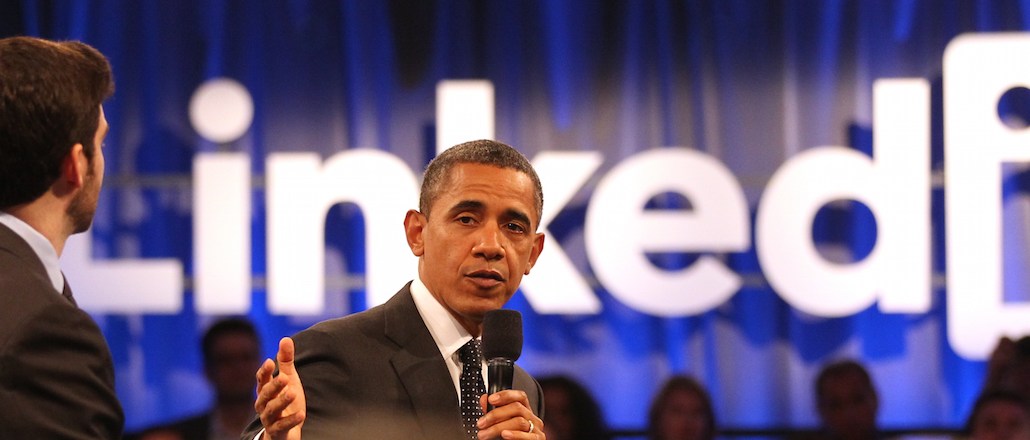
Talk of the rise of the visual Web evokes images of Kim Kardashian preening at her smartphone, grainy photos of poached eggs over avocado toast and people tweeting screenshotted excerpts of New Yorker articles. But now, LinkedIn wants in on the visual Web.
LinkedIn has been slowly rolling out a homepage redesign aimed at, among other things, convincing users to share more images on the platform. Now when users log on to LinkedIn, they’re met with a button placed front and center of their screening that urges them to “Upload a photo.”
So far, the strategy appears to be bearing fruit. The number of images shared and viewed has increased in recent months, according to LinkedIn spokeswoman Leslie Hobbs, although she declined to say by how much exactly.
The move coincides with other major platforms aiming to make their platforms more visual, as well. Twitter redesigned its feed in late October 2013 such that photos would appear automatically in users’ feeds instead of users having to click on a link and open the image in another window. The change was credited with a subsequent increase in per-tweet engagement.

While only 10 percent of tweets have photos, tweets with photos account for almost half of the most engaged with tweets, according to a November 2014 study of more than 1 million brand tweets conducted by social media analytics firm Socialbakers.
Images have long played a major part in Facebook’s popularity, but that didn’t stop the platform from purchasing Instagram for $1 billion in April 2012, a relative steal considering Citigroup recently valued Instagram at $35 billion.
Oddly, photo posts were the least popular post type on Facebook, trailing video and even link and plain text posts in terms of reach, according to Socialbakers. And then there’s Pinterest and Snapchat, two inherently visual platforms that are reportedly valued at $11 billion and $15 billion respectively.
Images could help further boost LinkedIn’s mobile growth, which has more than made up for a slight decline in desktop uniques in the U.S. from February 2014 to February 2015, according to research firm comScore.
“On mobile, the emphasis is more casual or event-related — colleagues at a team event or things you’re seeing at a conference,” LinkedIn homepage engineer Nash Raghavan told Digiday. “On desktop, they have access to additional visuals that we commonly see shared: infographics, product images, etcetera. You’ll see the platform experiences converge in the future.”
So obviously there’s money to be had in digital images. But for Socialie, a company that makes social media marketing software and advertises itself on LinkedIn, the more visual nature of the platform is secondary to LinkedIn’s targeting capabilities.
“The visual aspect isn’t super important to us for LinkedIn,” Socialie founder Kristin Adams told Digiday. “It’s nice but we’re there solely because we want to reach professionals in specific job roles.”

Adams added that mastering the visual Web remains a challenge for LinkedIn, especially relative to Facebook and Twitter, which have progressed beyond mere still photos and are now aggressively pushing more high-quality video into their users’ respective streams.
“We’ve only recently started advertising our product on LinkedIn but what I’ve found so far is that the news feed is no where near as active as the other big guys,” Adams said. “It sounds like LinkedIn had some catching up to do with the rest of the web. Photos and video really rule the content world and giving them more importance on the homepage will hopefully encourage more sharing and more engagement among users.”
When asked if it was looking to get into video, LinkedIn declined to comment.
Image courtesy Getty Images
More in Media

Publishers are hunting for AI prompt data — now they’re starting to get it from third-party companies
Publishers are finally gaining some visibility into AI search, as new prompt data tools crack open a black box.

Digiday+ Research: Publishers’ growing focus on video doesn’t translate to social platforms
Major publishers have made recent investments in vertical video, but that shift is not carrying over to social media platforms.

Technology x humanity: A conversation with Dayforce’s Amy Capellanti-Wolf
Capellanti-Wolf shared insight on everything from navigating AI adoption and combating burnout to rethinking talent strategies.





